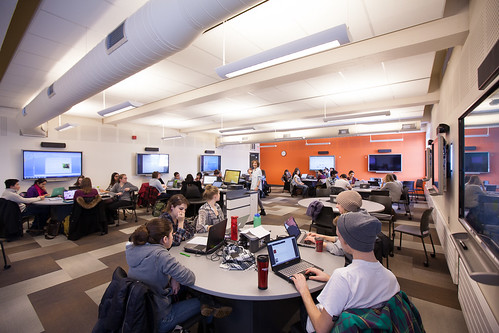Assorted thoughts and reflections on technology in education, and other things ...
Saturday, September 14, 2019
The illusion of learning - from lectures to active learning
If you look back to your school and university days you sometimes realise that the demanding and tough teachers you disliked so much at the time actually taught you more than the ones you liked. Activities that were challenging and uncomfortable at the time were with hindsight much greater learning experiences than more orthodox classroom methods. In short, we are not very good at recognising a learning experience. This puts into question the validity of student course evaluations where challenging teachers and activities are often given low scores.
This discrepancy is studied in an article in the Harvard gazette, Study shows students in ‘active learning’ classrooms learn more than they think. Many studies show that students appreciate lectures and see them as valuable learning experiences whereas they are often more skeptical to active, collaborative learning. The Harvard study compared student attitudes to traditional lectures with active learning classrooms and showed that although the students rated the lectures more highly, the test results showed that they actually learned more by active learning. A well-structured and professional lecture can be very enjoyable and create the illusion that you have learned a lot. But, of course, the learning happens when you start grappling with the issues yourself and with colleagues. The collaborative element is less clear-cut than the crisp lecture format and involves messy problem-solving and negotiation. We may not realise how much we have learned till much later. According to the lead author of the study, Louis Deslauriers:
“Deep learning is hard work. The effort involved in active learning can be misinterpreted as a sign of poor learning,” he said. “On the other hand, a superstar lecturer can explain things in such a way as to make students feel like they are learning more than they actually are.”
The lecture is still a symbol of higher education and in popular culture any reference to universities inevitably shows a lecture hall filled with students eagerly making notes on the professor's lecture. Students still expect university to be like this and are often disappointed if they don't have any lectures on a course. A good lecture can indeed act as an inspiration and a starting point for investigation but it is in the messy process of negotiation, meaning-making and problem-solving that the real learning takes place.
... the study shows that it’s important to ensure that neither instructors nor students are fooled into thinking that lectures are the best learning option. “Students might give fabulous evaluations to an amazing lecturer based on this feeling of learning, even though their actual learning isn’t optimal,” he said. “This could help to explain why study after study shows that student evaluations seem to be completely uncorrelated with actual learning.”
The key lies in helping students realise the value of active learning by explaining the process and introducing the methods step by step. At the same time it is a major step in the dark for many teachers who are justly proud of their ability to lecture and get excellent evaluations from doing so. Why change a winning formula that the students clearly appreciate? There's a chain reaction here where teachers need support to adapt to a new teaching method and the students in turn need support to adapt and learn to appreciate the new method.
Measuring actual learning versus feeling of learning in response to being actively engaged in the classroom
Louis Deslauriers, Logan S. McCarty, Kelly Miller, Kristina Callaghan, Greg Kestin
Proceedings of the National Academy of Sciences Sep 2019, 201821936; DOI:10.1073/pnas.1821936116
Subscribe to:
Post Comments (Atom)

No comments:
Post a Comment
Note: Only a member of this blog may post a comment.